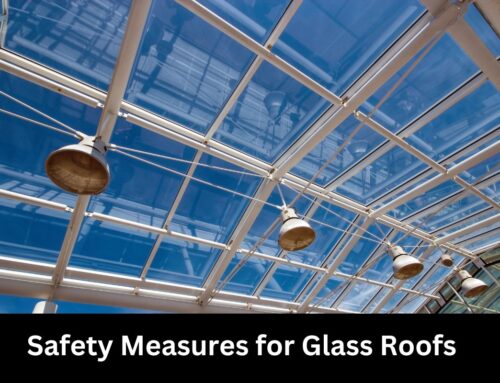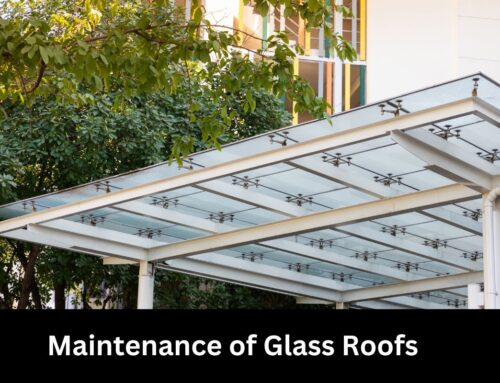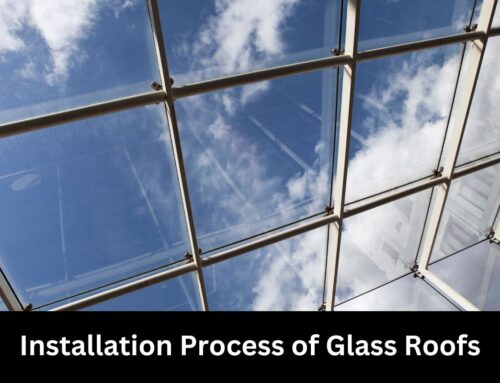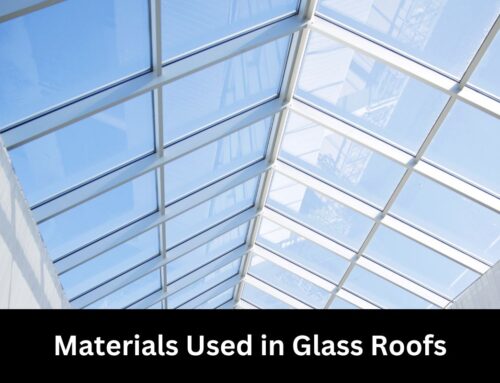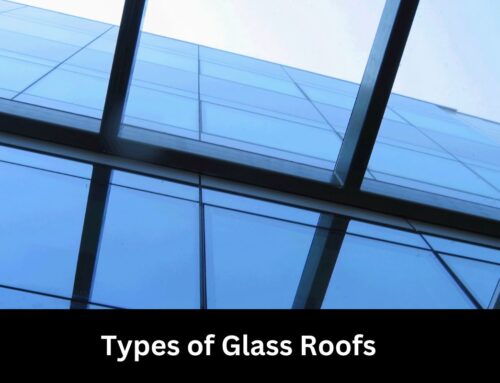Table of Contents
When it comes to designing a glass roof, there are numerous factors to consider in order to ensure a safe and aesthetically pleasing structure. ‘The glass ceiling is your canvas, but remember to build a strong foundation,’ as the saying goes.
In this article, we will delve into the essential design considerations that will enable you to create a glass roof that not only enhances the natural light and beauty of your space but also provides the necessary structural support and insulation.
First and foremost, selecting the right materials is crucial. From laminated glass to tempered glass, each option has its own set of advantages and considerations. Additionally, you must carefully assess the structural support required for your glass roof. This involves determining the load-bearing capacity of the supporting beams and columns, as well as accounting for wind and snow loads.
Insulation is another critical aspect to address, as it ensures a comfortable and energy-efficient environment beneath the glass roof. Proper insulation materials and installation techniques are vital to prevent heat loss or gain.
Furthermore, regular maintenance is essential to uphold the longevity and safety of your glass roof. From cleaning to inspecting for potential cracks or leaks, a proactive approach will minimize the risk of any unexpected issues.
Lastly, integrating the design of your glass roof seamlessly with the rest of your space is paramount. A well-planned design will not only provide a visually appealing result but also ensure the safety and functionality of the entire structure.
By understanding and implementing these design considerations for glass roofs, you can create a stunning and secure space that allows you to bask in the natural light while maintaining a sense of safety and peace of mind.
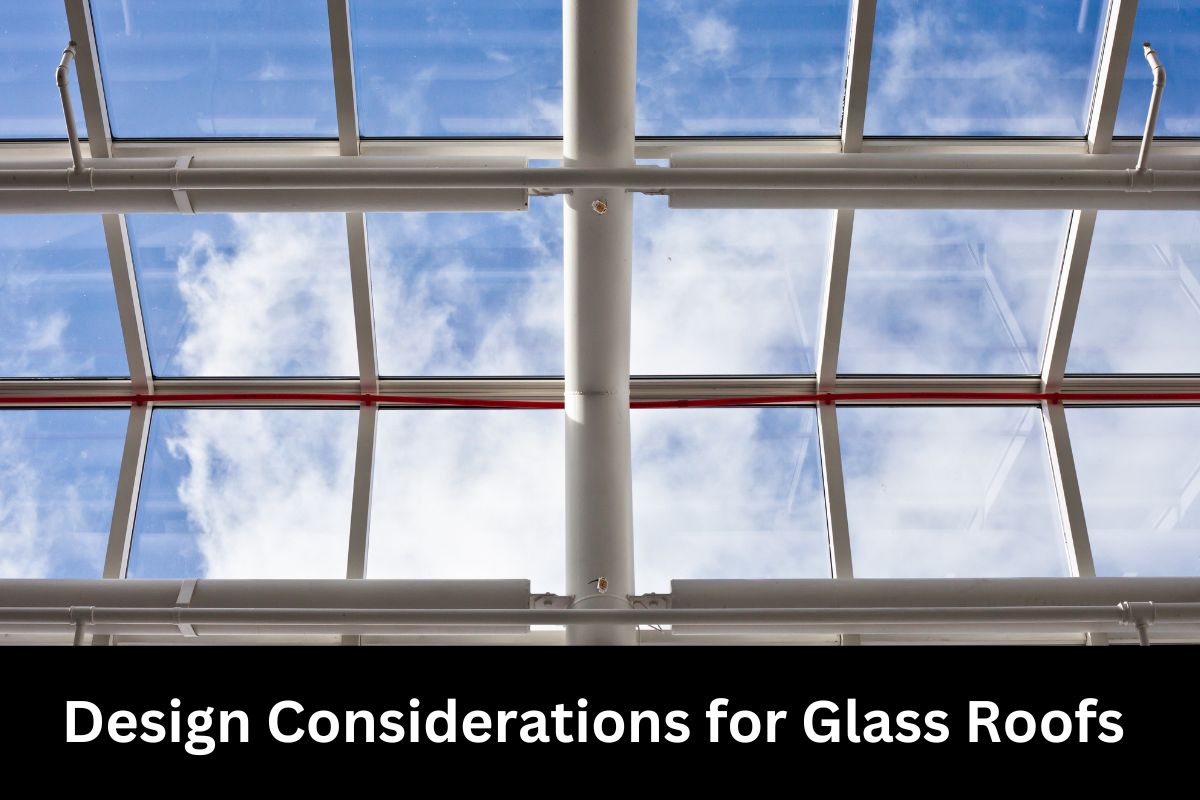
Key Takeaways
- Safety and structural support are crucial considerations when designing a glass roof.
- Choosing the right materials, such as laminated or tempered glass, is important for durability and safety.
- Insulation is essential for maintaining a comfortable and energy-efficient environment under the glass roof.
- Regular maintenance and inspections are necessary for longevity and safety.
Materials for Glass Roofs
You should consider using high-quality tempered glass for your glass roof as it not only adds elegance to your space but also ensures safety and durability. Tempered glass is a type of safety glass that is processed using thermal or chemical treatments, making it stronger than regular glass. It is designed to break into small, granular pieces instead of sharp shards, reducing the risk of injury in case of accidental breakage.
When choosing tempered glass for your glass roof, it’s important to consider its thickness. Thicker glass provides better insulation and soundproofing, making your space more comfortable and quiet. Additionally, thicker glass can withstand greater loads and impacts, increasing the overall strength and durability of your glass roof.
Another important consideration is the type of coating applied to the glass. Low-E coatings can help regulate the temperature inside your space by reflecting heat back into the room during the winter and blocking it during the summer. This not only improves energy efficiency but also protects your furniture and belongings from potential damage caused by UV rays.
To ensure the safety and longevity of your glass roof, it’s crucial to have proper structural support in place. The next section will discuss the different options available for supporting glass roofs without compromising their aesthetic appeal.
Structural Support for Glass Roofs
Supported by a sturdy framework, the ethereal transparency of a glass roof allows natural light to cascade through, creating a breathtaking canopy that seamlessly merges the indoors with the outdoors. To ensure the structural integrity and safety of glass roofs, careful consideration must be given to the selection and design of the support system. Here are five key elements to consider:
- Load-bearing capacity: The support system must be able to bear the weight of the glass panels and any additional loads such as snow, wind, or maintenance personnel. Calculations should be performed to determine the required load-bearing capacity.
- Material selection: The choice of materials for the support system is critical. Steel, aluminum, or laminated timber are commonly used due to their strength and durability.
- Connection details: The connections between the support structure and the glass panels should be designed to provide sufficient strength and rigidity. Steel brackets or clamps are often used to securely fasten the glass panels to the support system.
- Redundancy: Incorporating redundant structural elements can enhance the safety of glass roofs. This includes adding additional supports or bracing to ensure that the structure can withstand unexpected loading conditions.
- Maintenance access: Designing the support system to allow safe and easy access for maintenance and cleaning is essential. Consideration should be given to the placement of access points and the use of safety equipment.
In order to provide adequate insulation for glass roofs, it’s essential to carefully select the appropriate materials and insulation techniques.
Insulation for Glass Roofs
To achieve optimal thermal efficiency and prevent heat loss, it’s crucial to carefully select and apply suitable insulation materials and techniques for your glass roof. Insulating a glass roof is essential to maintain a comfortable indoor environment and reduce energy consumption.
One effective insulation option is double glazing, which consists of two glass panes with a gap in between filled with an insulating gas, such as argon. This design helps to minimize heat transfer by trapping air and preventing it from escaping. Additionally, low-emissivity coatings can be applied to the glass to further enhance insulation. These coatings reflect heat back into the room, reducing heat loss through the roof.
Proper installation of insulation materials is vital to ensure a tight seal and prevent air leakage. It’s important to consult with professionals who have experience in glass roof insulation to ensure the best results.
Maintaining the insulation integrity of your glass roof is crucial for long-term performance and energy efficiency. Regular inspections and repairs, if needed, will help to maintain the insulation’s effectiveness and prevent any potential energy loss.
Transitioning into the next section, a well-maintained glass roof not only ensures thermal efficiency but also extends the lifespan of the structure.
Maintenance of Glass Roofs
Regular maintenance is key to preserving the longevity and efficiency of your glass roof. By properly caring for your glass roof, you ensure that it remains structurally sound and maintains its aesthetic appeal.
To start, it’s important to regularly inspect the glass panels for any signs of damage or wear. Look out for cracks, chips, or leaks, as these can compromise the integrity of the roof.
Additionally, keep the glass clean by removing any debris, such as leaves or branches, that may accumulate on the surface. Use a soft cloth or sponge and a mild detergent to gently clean the glass, avoiding any abrasive materials that could scratch the surface.
Furthermore, check the seals and weather stripping around the glass panels to ensure they are intact and functioning properly. Replace any damaged or worn seals promptly to prevent water leakage and heat loss.
Finally, consider scheduling regular professional inspections and maintenance to address any potential issues before they become major problems. By following these maintenance practices, you can ensure the safety and efficiency of your glass roof for years to come.
Transitioning into the subsequent section about how the maintenance needs of a glass roof can be seamlessly integrated into its design, it’s important to consider…
Design Integration of Glass Roofs
When incorporating glass roofs into overall architectural design, it’s important to carefully consider factors such as structural support, thermal insulation, and water drainage. The design should seamlessly integrate the glass roof with the existing structure, ensuring that it enhances the overall aesthetic appeal.
Maximizing natural light and views is another crucial aspect to consider. The use of large glass panels and strategic placement can create a bright and open atmosphere while providing occupants with stunning views of the surrounding environment.
Incorporating glass roofs into overall architectural design
Glass roofs seamlessly blend into the architectural design, allowing natural light to flood the space and creating a breathtakingly open and airy atmosphere. When incorporating glass roofs into the overall architectural design, several considerations must be taken into account to ensure safety and functionality.
First, it’s crucial to consult with a structural engineer to assess the load-bearing capacity of the existing structure and determine if any additional support is needed.
Additionally, the selection of glass should prioritize safety, with tempered or laminated glass being the preferred options to minimize the risk of breakage.
Furthermore, proper insulation and ventilation systems should be integrated to prevent condensation and regulate temperature.
Lastly, the design should also consider the impact of the glass roof on energy efficiency and the overall sustainability of the building. By addressing these considerations, architects can create stunning spaces that seamlessly integrate glass roofs while ensuring safety and functionality.
Transitioning into the subsequent section about maximizing natural light and views, it’s essential to explore design strategies that optimize these elements without compromising the integrity of the structure.
Maximizing natural light and views
To truly immerse yourself in the beauty of your surroundings, imagine how you can effortlessly invite the radiant warmth of natural light and the captivating views of the outside world into your space.
Maximize the potential of your glass roof to flood your interior with sunlight and provide unobstructed vistas. Consider the orientation and angle of the glass panels to optimize the amount of sunlight that enters your space, while ensuring the roof maintains structural integrity.
Utilize high-quality, low-reflective glass to minimize glare and create a comfortable environment. Implement appropriate shading systems to regulate the amount of light and heat entering your space, allowing for a pleasant experience throughout the day.
Additionally, consider the safety aspects of your glass roof, such as using laminated or tempered glass to prevent shattering and ensure the protection of occupants. With these considerations, you can create a space that not only embraces nature but also prioritizes safety.
Frequently Asked Questions on Design Considerations for Glass Roofs
Are glass roofs suitable for all types of buildings?
Glass roofs are not suitable for all types of buildings. Statistics show that glass roofs have a higher risk of breakage and can pose safety hazards in areas prone to extreme weather conditions.
How do glass roofs perform in extreme weather conditions, such as strong winds or heavy snow?
Glass roofs are designed to withstand strong winds and heavy snow loads. Specialized materials and structural supports are used to ensure safety and durability. Regular maintenance and inspection are recommended to ensure optimal performance in extreme weather conditions.
What are the potential drawbacks or limitations of using glass roofs in terms of energy efficiency?
Glass roofs, while elegant, have drawbacks in terms of energy efficiency. Heat gain and loss can be significant, increasing energy costs. Proper insulation and shading systems must be implemented to mitigate these issues and ensure safety.
Can glass roofs be customized to accommodate specific design requirements, such as curved or sloped structures?
Yes, glass roofs can be customized to accommodate specific design requirements, such as curved or sloped structures. This customization allows for flexibility and creativity in architectural design while maintaining the safety and integrity of the structure.
How does the installation process of a glass roof differ from traditional roofing materials?
The installation process of a glass roof differs from traditional roofing materials in several ways. Firstly, it requires specialized equipment and trained professionals. Additionally, safety measures like fall protection systems are crucial due to the fragile nature of glass.
Conclusion
In conclusion, when considering glass roofs for your design, it’s crucial to carefully choose the materials, ensuring they’re durable and able to withstand weather elements. The structural support must be robust to prevent any potential collapses or damages.
Proper insulation is essential to maintain a comfortable indoor environment. Regular maintenance is necessary to keep the glass roofs clean and in good condition.
Lastly, integrating the design of glass roofs seamlessly with the overall architecture can create a stunning and harmonious aesthetic symbolizing transparency and innovation.
Related Articles

